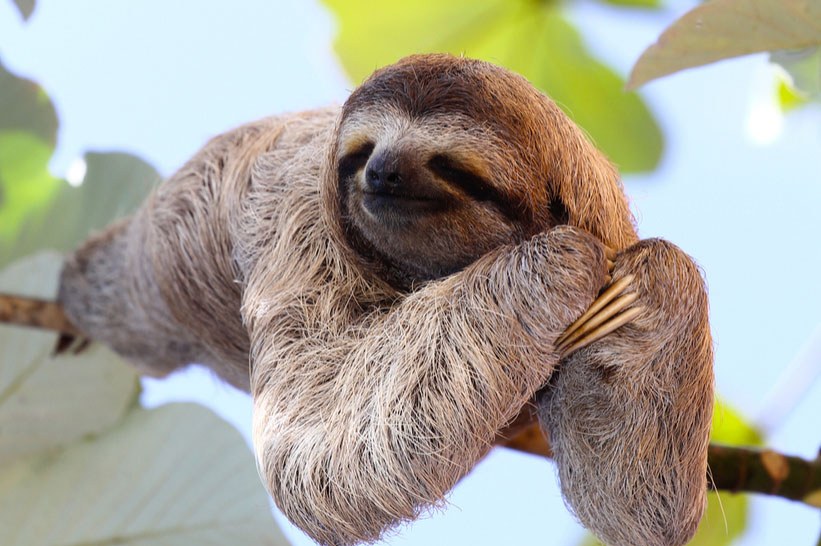According to the World Wildlife Fund, there are number of endangered species in Central America – among them is the very recognizable three-toed tree sloth indigenous to the tropical rain forests of Central America. If you’re lucky, you might catch a glimpse of one of these slow-moving tree-dwellers on your next Central American Adventure.
Scientifically Speaking
Three-Toed Sloths are known by the scientific name Bradypus, and for the truly nerdy among you, is from the Greek for “slow feet.” They are a part of the Phylum Chordata and the Class Mammalia (you know, Mammals).
They are herbivores (plant eaters) munching on leaves, buds, and twigs from their canopy homes and digesting them with their four-part stomachs and the bacteria within. The process is slow, like the three-toed sloth itself, with digesting taking up to one month for a single meal.
The three-toed sloth is slightly smaller than his two-toed cousins, weighing in at around nine pounds and measuring near 23 inches tall. Unlike other mammals, the three-toed sloth is unable to regulate its body temperature, only allowing them to live in warm and humid climates. This makes the preservation of the three-toed sloths’ Central American homes vital to their survival!
Living the High Life
Living up to its name, “slow feet,” the three-toed sloth and its cousins are known as the world’s slowest mammal. So much so, that its sedentary lifestyle allows algae to grow on its furry, making its leafy home in the tree tops the perfect camouflage from predators.
Three-toed sloths feature long claws – often up to 4 inches – giving them a powerful grip on their tree-top homes, while making life on the ground difficult and dangerous.
Sloths spend virtually their entire lives in the same tree, sleeping curled in the fork of their tree or hanging from the branches by their claws.
Eating and sleeping are the sloths favorite pass times all done from the comfort of their rainforest canopy homes. They often sleep from 15 to 20 hours a day, with nocturnal eating filling the remainder of their solitary lives. Their nourishment comes from the plants they eat, as does nearly all their water.
Three-toed sloths only leave their trees when relieving themselves taking or an occasional swim, often dropping directly from the tree into the river below. Sloths, while not good on land are surprisingly strong swimmers.
These mammals even mate and give birth while hanging in their beloved tree homes. Three-toed babies cling to their mothers – for at least the first nine months of their lives – when female sloths leave their shared tree home to their youngster and move to a new home.
Interesting and Fun Three-toed Facts
- Three-toed sloths can turn their heads up to 270 degrees – the result of an extra vertebrae in their neck.
- Three-toed sloths’ mouths are uniquely shaped so they always look as if they are smiling.
- Three-toed sloths high-pitched call “ahh-eeee” is heard through the forest giving them the nickname “ais” pronounces “eyes” to mimic the call.
- A female sloth uses a scream to notify males of her readiness to mate. The males then “fight it out” to earn the prize of mating with her.
- Sloths climb only about six feet per minute.
- Sloths can breaststroke, as well as, if not better than humans.
Protecting the Three-Toed Sloths
Because these gentle creatures are completely dependent on the tropical rain forests of Central America for survival; to protect the three-toed sloths, we must work together to protect the rain forests from the threat of deforestation.








